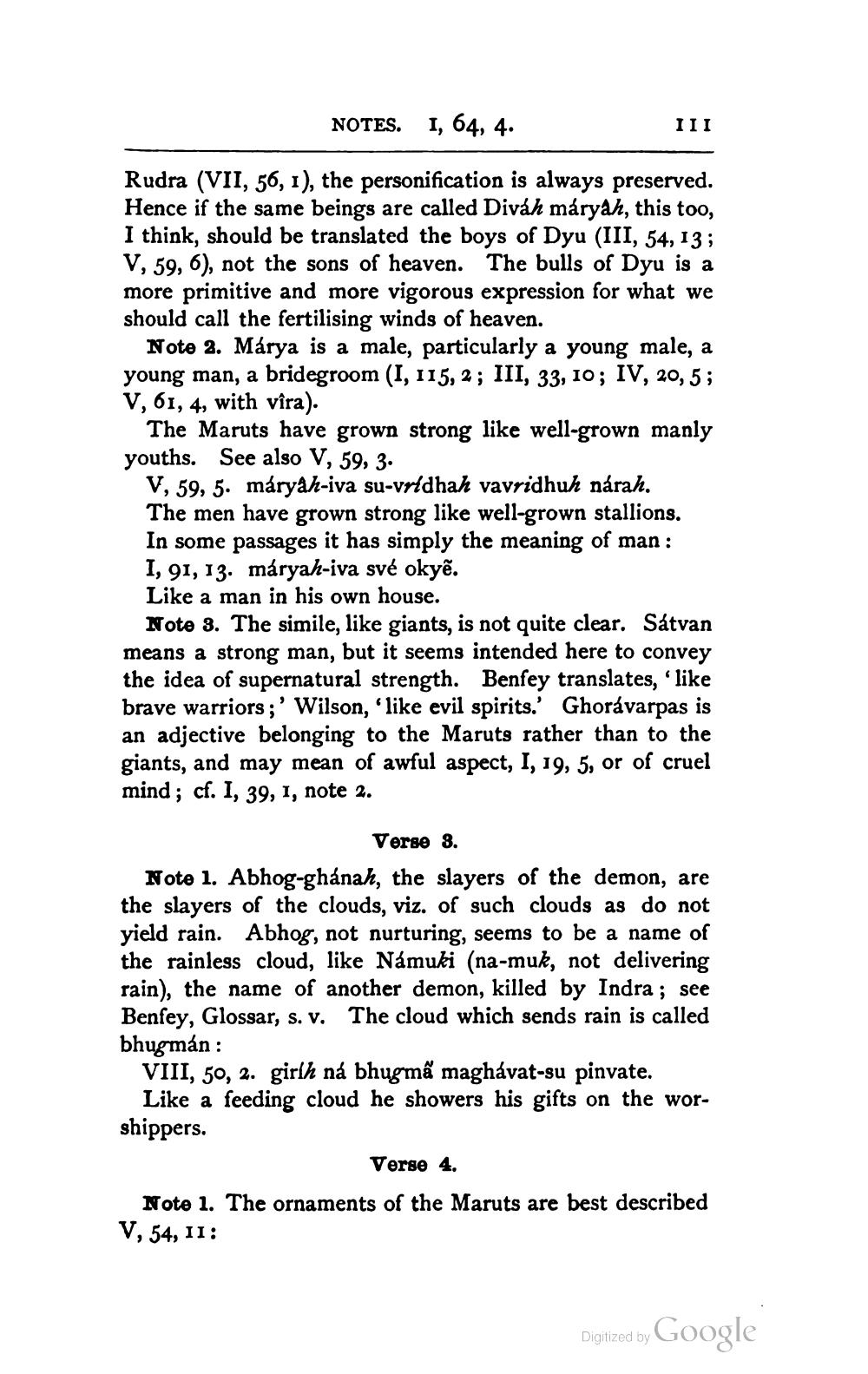________________
NOTES. I, 64, 4.
Rudra (VII, 56, 1), the personification is always preserved. Hence if the same beings are called Diváh máryah, this too, I think, should be translated the boys of Dyu (III, 54, 13; V, 59, 6), not the sons of heaven. The bulls of Dyu is a more primitive and more vigorous expression for what we should call the fertilising winds of heaven.
Note 2. Márya is a male, particularly a young male, a young man, a bridegroom (I, 115, 2; III, 33, 10; IV, 20, 5; V, 61, 4, with vîra).
The Maruts have grown strong like well-grown manly youths. See also V, 59, 3.
V, 59, 5. máryah-iva su-vrldhah vavridhuh nárah. The men have grown strong like well-grown stallions. In some passages it has simply the meaning of man: I, 91, 13. máryah-iva své okyế. Like a man in his own house.
Note 3. The simile, like giants, is not quite clear. Sátvan means a strong man, but it seems intended here to convey the idea of supernatural strength. Benfey translates, 'like brave warriors;' Wilson, 'like evil spirits.' Ghorávarpas is an adjective belonging to the Maruts rather than to the giants, and may mean of awful aspect, I, 19, 5, or of cruel mind; cf. I, 39, 1, note 2.
Verse 8. Note 1. Abhog-ghanah, the slayers of the demon, are the slayers of the clouds, viz. of such clouds as do not yield rain. Abhog, not nurturing, seems to be a name of the rainless cloud, like Námuki (na-muk, not delivering rain), the name of another demon, killed by Indra; see Benfey, Glossar, s. v. The cloud which sends rain is called bhugmán:
VIII, 50, 2. girlh ná bhugmã maghavat-su pinvate.
Like a feeding cloud he showers his gifts on the worshippers.
Verse 4, Note 1. The ornaments of the Maruts are best described V, 54, 11:
Digitized by Google




